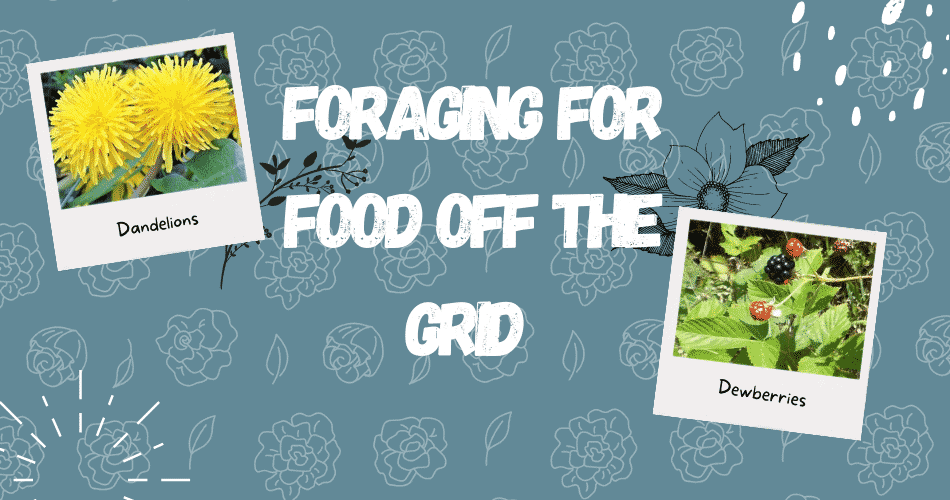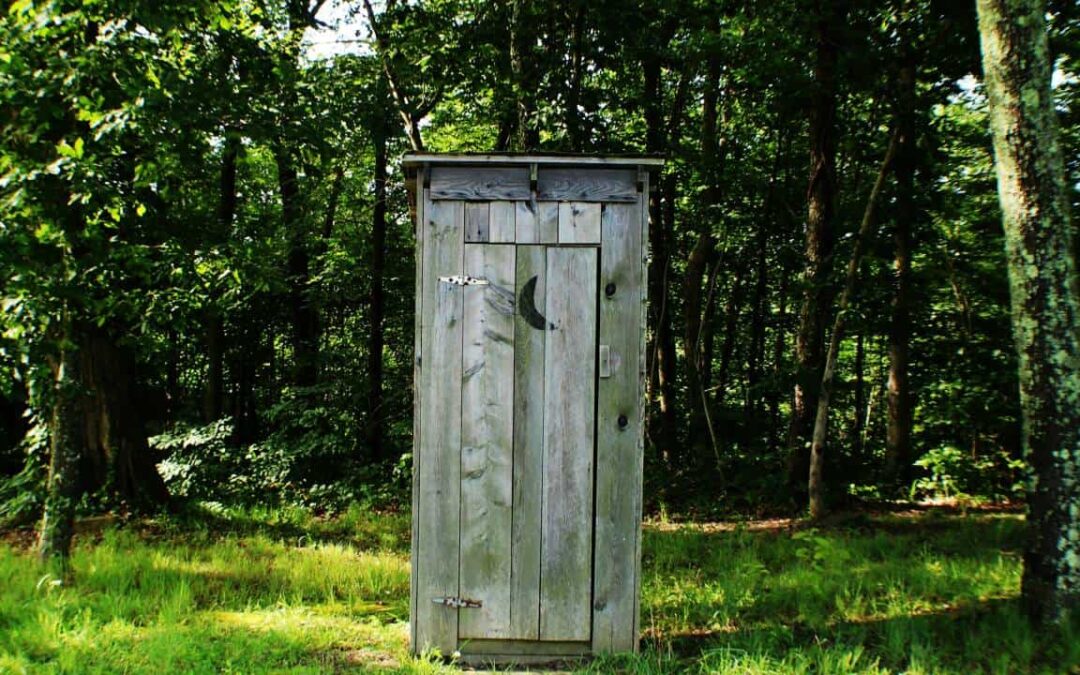If you’ve ever wanted to learn about foraging for food but didn’t know where to start, this is the place for you. Many people want to learn how to forage, and the reasons vary.
Some people are finding their food budget stretched to the maximum with the cost of groceries rising nearly 15% on average, over the course of 2021!
Other people are really excited by the prospect of living in harmony with the land and finding natural food sources.
Today, I’m going to show you a few things from my local area, give you some advice on tools, and how to get started with foraging for food. Plus, I’ll go over some of the easy-to-find edibles and help guide you with safety in mind.
What food can you forage?
The types of foods that can be foraged for food are nearly endless. If you are urban foraging, don’t think that it’s a waste of your time. I often knocked on doors where I saw fruit-laden trees with fruit rotting on the ground. Often, people are happy to allow you to pick all the fruit you’d like in exchange for cleaning the ground up underneath the tree. I’ve harvested buckets of apples, oranges, and even some great walnuts this way.
Fruits can grow wild. Nuts are also a relatively easy find, depending on where you live. Berries and greens are everywhere, and many types of flowers, both cultivated and wild, are edible. Some people learn to become mushroom hunters too. This is a very specialized type of foraging that I highly encourage to join a group and learn from others. Eating mushrooms without being certain of the things you are eating is a potentially deadly risk.
How do you forage food in the wild?
First of all, you want to educate yourself. There are many ways you can begin to learn what foods are safe and available in your area. I’ve personally found local foraging groups on Facebook to be a lot of fun and a treasure trove of information. You can often post photos of your finds and have someone with a botany background positively identify your find. Then you can do some research and learn all about it. Is it edible? Which parts? Is it medicinal? Some plants can be used in many ways, while others are only used for one or two things and must be very carefully handled. Other plants are lethal to the degree that even a hospital cannot save you, they can only make you comfortable as your body tries to fight the poison you’ve ingested. Do not take foraging lightly. It’s serious business.
Some common ways of learning about wild edibles:
- Take a local class at a community college
- Take a nature walk with Forest Ranger at a local state park, many offer special classes and walks
- Join local clubs
- Buy books
- Find local groups on MeetUp.com to learn hands on with
- Download some plant identification apps on your phone (but don’t always trust the to eat what you find!)
- Remember to VERIFY your findings always, always, always (with several resources) until you are an expert
What can I forage for?
Start with what is common in your area. Today, I’m going to talk about some things that readily available to me, here at my home. I have allowed two acres I live on to grow wild as a bird, butterfly, and bee sanctuary. I’ve learned about the things that are available to me, just outside my door. Learn about the plants that grow in your area and begin looking for them. Verify with others that you’ve indeed found what you think you have.
Here are a few things I am able to find right outside my door. These are also common in many areas around the United States and would good things for you to begin with finding:
Black-eyed Susan (Rudebekia)
This common flower is native to most of North America. It was used by the Menominee and Potawatomi Native Americans. The roots have been crushed for their juices and used as earache drops for centuries. The early spring greens can be cooked and eaten. The petals may be added to a salad.

The Indian Paintbrush (Castilleja)
This flower is sometimes referred to as Native Paintbrush in the name of political correctness. The flowers of the plant are edible and were served as a condiment by the Native Americans who roamed the continental United States. It should be eaten in moderation only.

Dewberries (Rubus trivialis)
The Dewberry, or Southern Dewberry, is the cousin to Blackberries. They are essentially the same but slightly different. The Dewberry has a reddish look to the stems and the vines are finer with thorns that are more delicate. The thorns will break off easily and stick in fingers or legs. Blackberries grow more erect with woodier stems and harder thorns. The Dewberries tend to ripen a few weeks before Blackberries do. When picked at their ripest, the Dewberry is delicious and sweet. It can be used for all the same things Blackberries are used for and make a delicious wine. Add Dewberries to shakes, pancakes, muffins, ice cream, yogurt, and more. They are often the best when enjoyed straight from the vine.

Mullein (Verbascum)
This is a common weed all over the United States. You can often find Mullein in a cow pasture. The leaves and flowers are both edible. The leaves have a fine hair and can irritate the skin. Though some refer to this as a toilet paper plant for hikers, those with sensitive skin might not want to try it. The leaves and flowers can be used in salads and the leaves can be dried and used to make a fine tea. Mullein has long been revered for it’s use as a tonic for asthma, whooping cough, any lung ailments, and coughs. Enjoy a Mullein tea when you’re down with a cold and you’ll appreciate Mullein all the more.

Fleabane (Erigon)
This plant is wonderful for my pollinator needs but it’s also a wild edible plant. The leaves should be cooked but can be eaten raw if you’re in a pinch. Cooking will remove the fine hairs that cover the leaves and make them more palatable. When cooked, they taste similar to spinach. The name is because the plant is actually a natural flea repellant and in two years, I’ve not had to treat my dogs for fleas because I’ve allowed the fleabane to grow at will. This plant is a case of being very careful as to which part of the plant you eat. DO NOT EAT THE FLOWERS! They will cause much gastric distress and are considered toxic.

Common Yarrow (Achillea millefolium)
Yarrow can be identified by the licorice-like odor, and it has a mild, sweet flavor, reminiscent of tarragon. The whole plant may be consumed, and the flowers can be harvested and dried, ground into a powder and used as a blood stop for cuts and wounds. You may also use it as a spice to add to food. Caution with this plant! First of all, it is very often mistakenly confused with Poison Hemlock. You must be very careful in your identification. Yarrow flowers are different and must be examined closely to rule out the poisonous look-alike! Also, if you take blood thinners by prescription, you should not consume Yarrow.
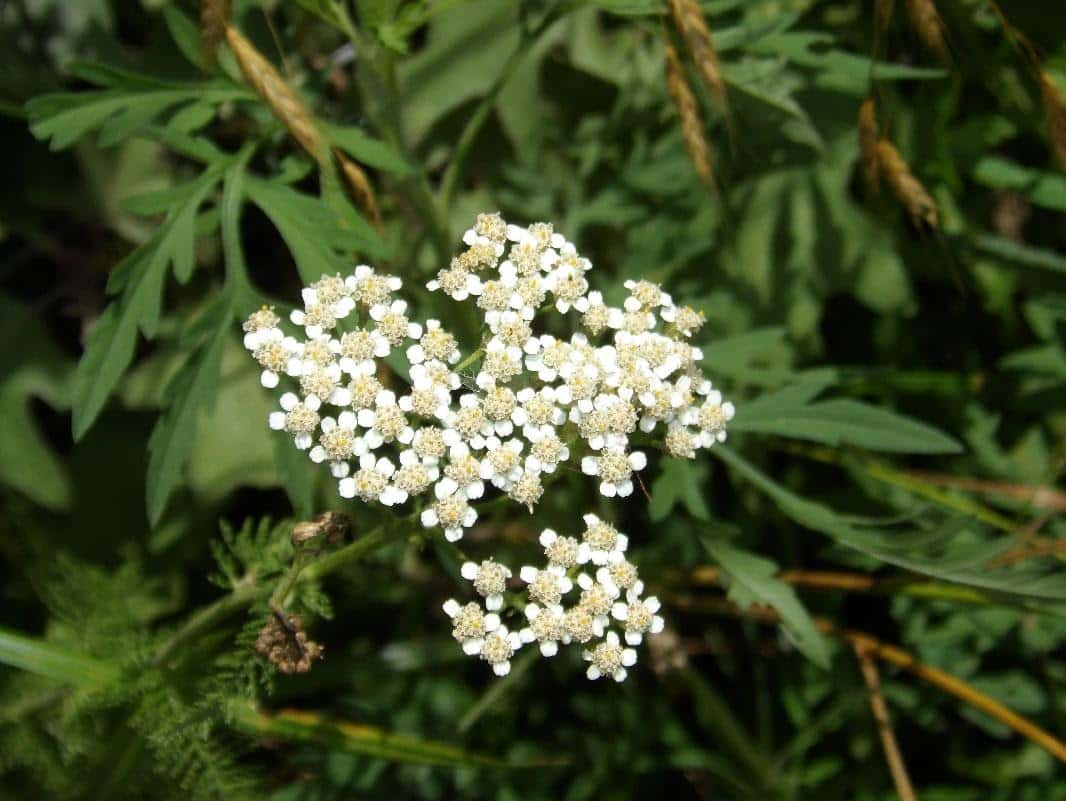
White Clover (Trifolium repens)
Everything above the ground is edible on this plant. It’s very commonly seen in pastures across most of the United States. Even the seed pods are edible. The leaves can be dried and used in teas or added to many things as they have a slight vanilla flavor. Eat the leaves raw or dried in salads or baked breads.
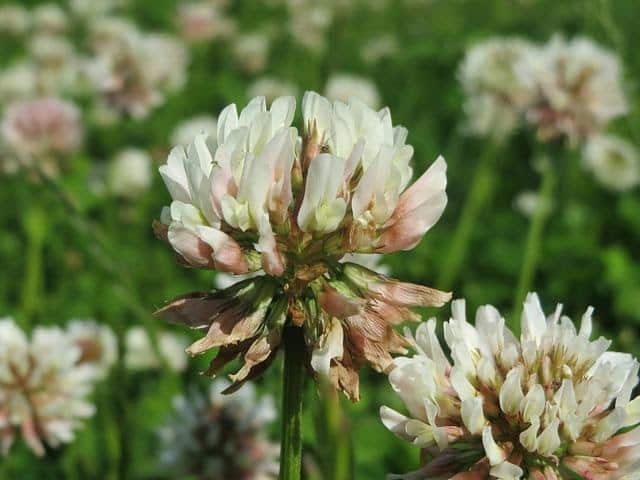
Dandelions (Taraxacum)
This is probably one of the most common flowers that is regarded as a weed. In fact, many urban landowners wage war against the Dandelion every spring. People spend a fortune trying to eradicate a plant that is completely edible and useful. The flower heads are delicious battered and fried. The greens can be cooked or eaten raw in a mixed salad of greens. The flowers are also edible raw and taste very mild and sweet. You can make tea from Dandelions and wine. It’s possible that they make help lower blood sugar when added to the healthy diet of diabetics. Dandelion roots are also edible and may be cooked or eaten raw, dried, powdered, and added to tinctures or teas. This is a very healthy plant to enjoy.
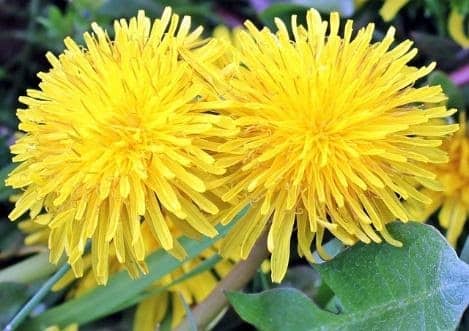
Ragweed (Ambrosia artemisiifolia)
Yes, Ragweed is edible. In fact, there is some evidence that Native Americans grew it as a crop and harvested the seeds. The seeds are incredibly high in protein (47%). That is just as good as corn, wheat, or soybeans for calories that the body can burn efficiently. If you’re ever in a desperate situation, you could survive a long time on ragweed seeds. The oil was also used by crushing the seeds and boiling them. The oil floated to the top of the water and was skimmed off. Also, medicinally, the leaves of ragweed can be crushed and applied to insect bites and rashes. This is good information to keep on hand.
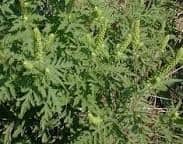
What can I forage for?
You should start off by choosing one type of food you’ll look for and learn that category first. For example, perhaps you should start with flowers? I’ve already shown you many types above that are common and easy to find. Once you are great at identifying one, start looking for more. Eventually, you’ll be an expert on flowers. Then move on to looking for nuts. That means you’ll want to learn to identify trees. You can’t learn everything in a season. Some people have spent a lifetime foraging and they still see plants they aren’t familiar with. It’s also very regionally specific. What you find in Washington State will be far different from what is found in Missouri, for example.
How do you start foraging?
First, you have to have an interest in learning about edible plants. Educate yourself and arm yourself with as much information as you can. Luckily, today’s technology is very helpful. You can download apps to your phone that may help you make preliminary identification of edible plants. Verify your results by seeking help through Facebook groups, hiking and foraging clubs, or your local forestry departments. Using field guides can also be helpful. You should verify for your preliminary identification with at least three other sources. Remember this phrase – When in doubt, throw it out! That will ensure that you’re always safe!
Some tools you’ll want:
- A bag or basket to place your finds in. An over-the-shoulder canvas bag can be very useful too.
- Scissors or clippers that you can use to snip flower heads off in the field
- Gloves if you intend to hunt where thorns are found. Wear appropriate clothing
- Shorts and sandals are not appropriate. Remember that snakes lurk in briar patches and in tall grasses. Always wear protective clothing and sensible shoes
- Take your cell phone with an ID app and take plenty of photos
- Photograph the fruits of a plant
- Photograph the leaves
- Take a close-up photo
- Also take a whole plant photo
- Using a small hand trowel will help you dig up roots so have one in your bag with your scissors
- A small pocketknife will come in handy
To close, here are some recipe ideas for eating your finds (curated by your truly):
Daisies added to a garden vegetable salad.
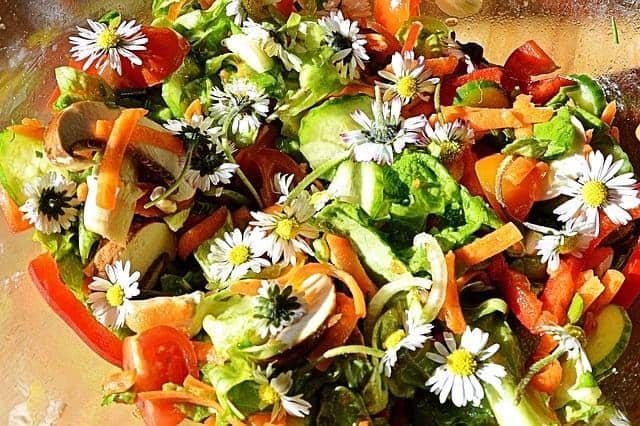
Dandelion heads separated from the greens to be prepared separately.
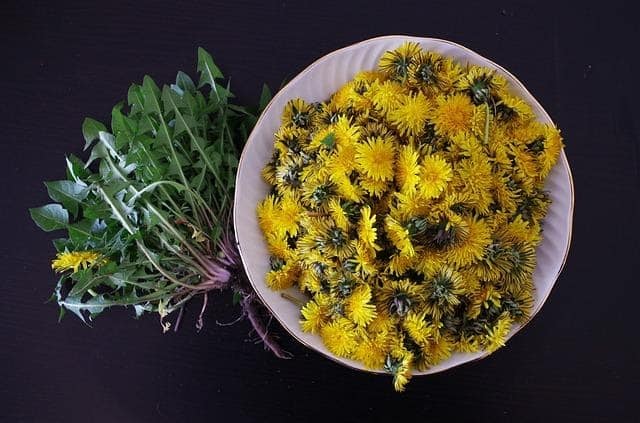
Simmering your dandelion greens with heads chopped finely and added back in.
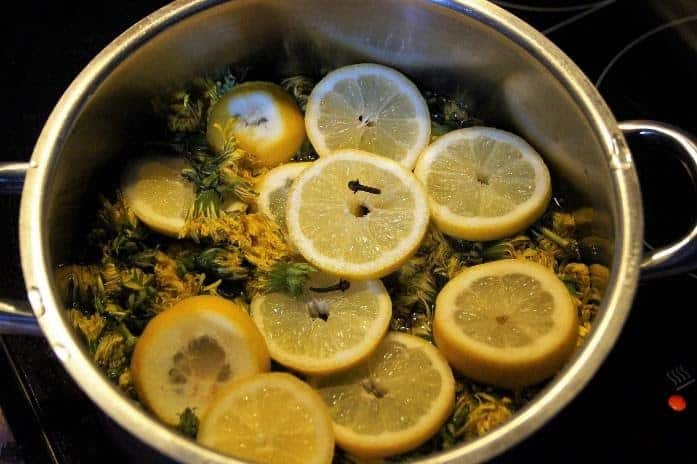
Dewberries or blackberries in a dish of yogurt gives you so much nutrition!
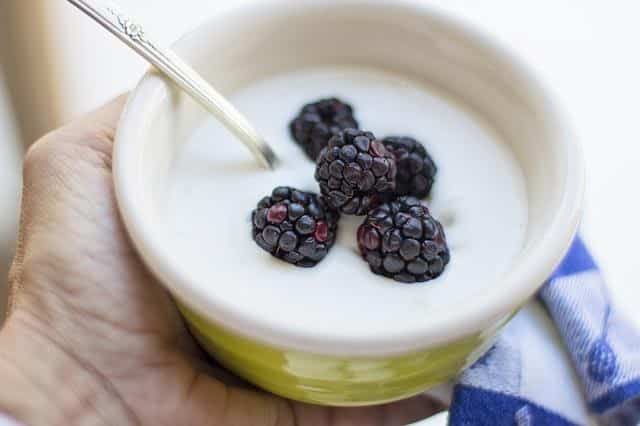
Looking for more amazing content on foraging? Check out our pieces on Foraging For Wild Chanterelle Mushrooms, Mushroom Hunting Tips for a Successful Harvest, and Mushroom Hunting in Michigan.
